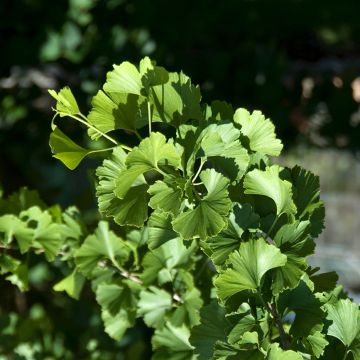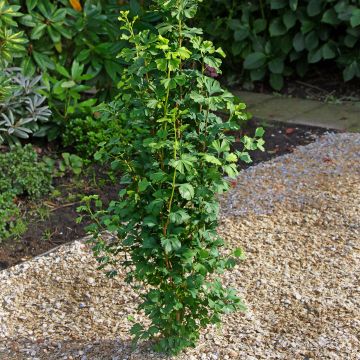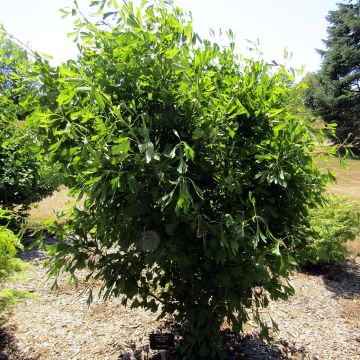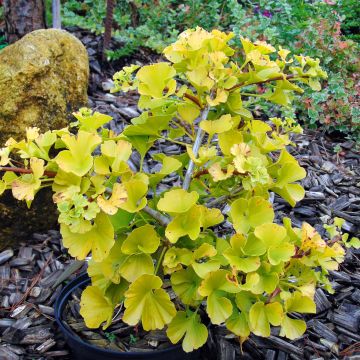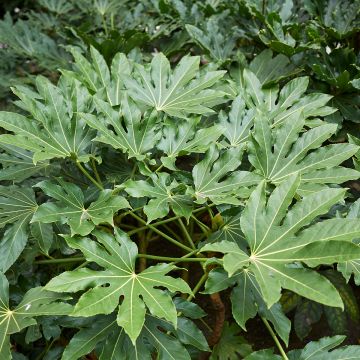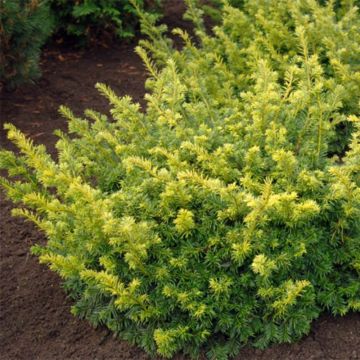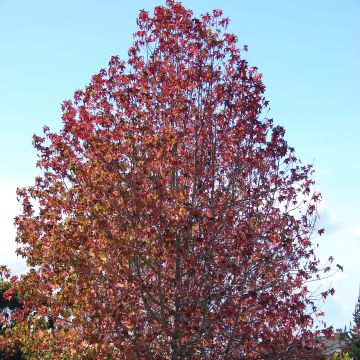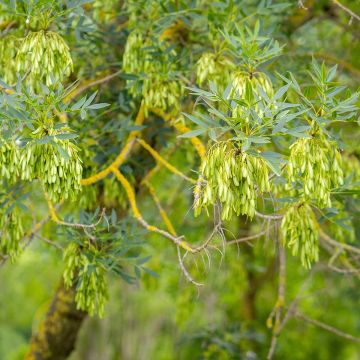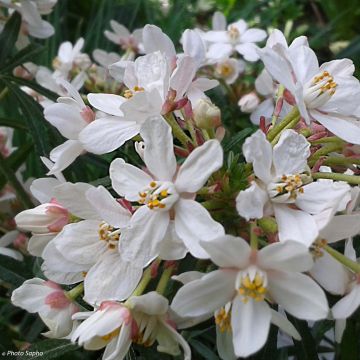

Ginkgo biloba - Maidenhair Tree
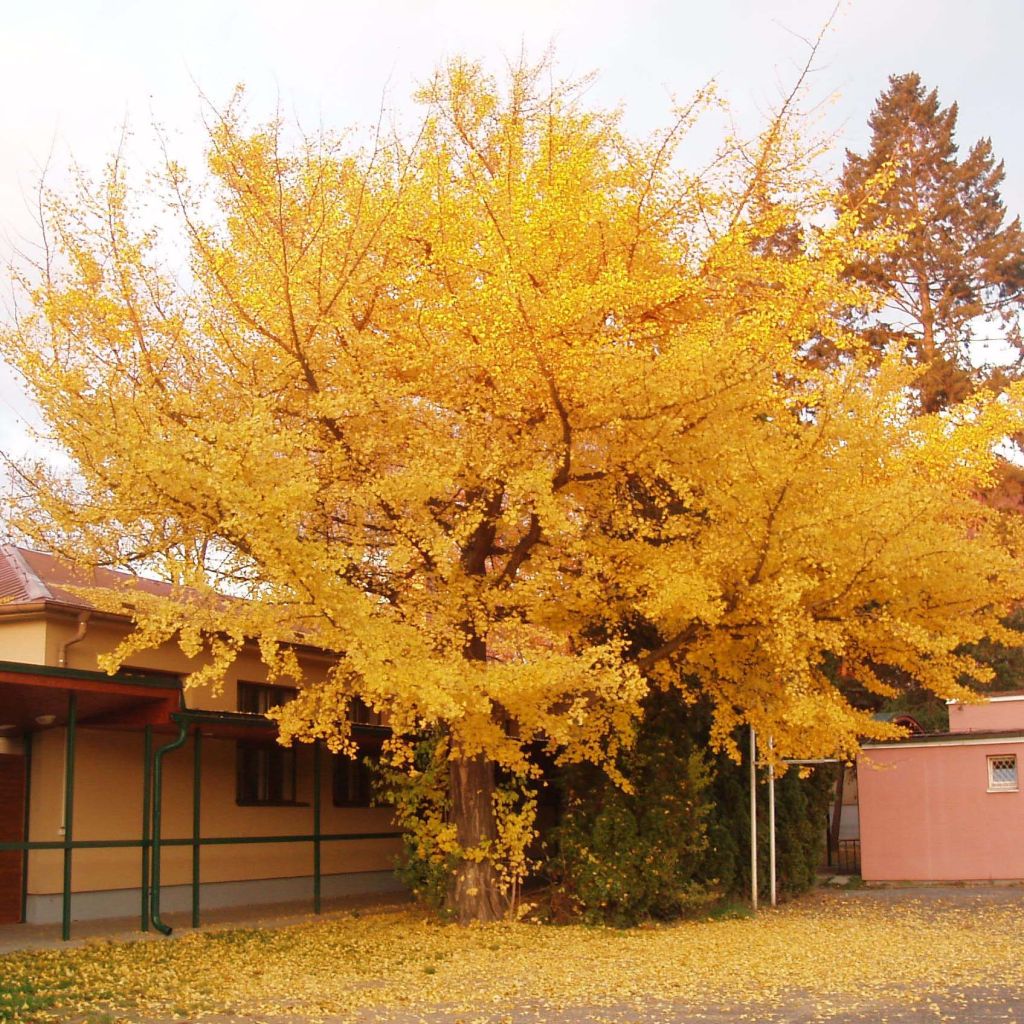

Ginkgo biloba - Maidenhair Tree
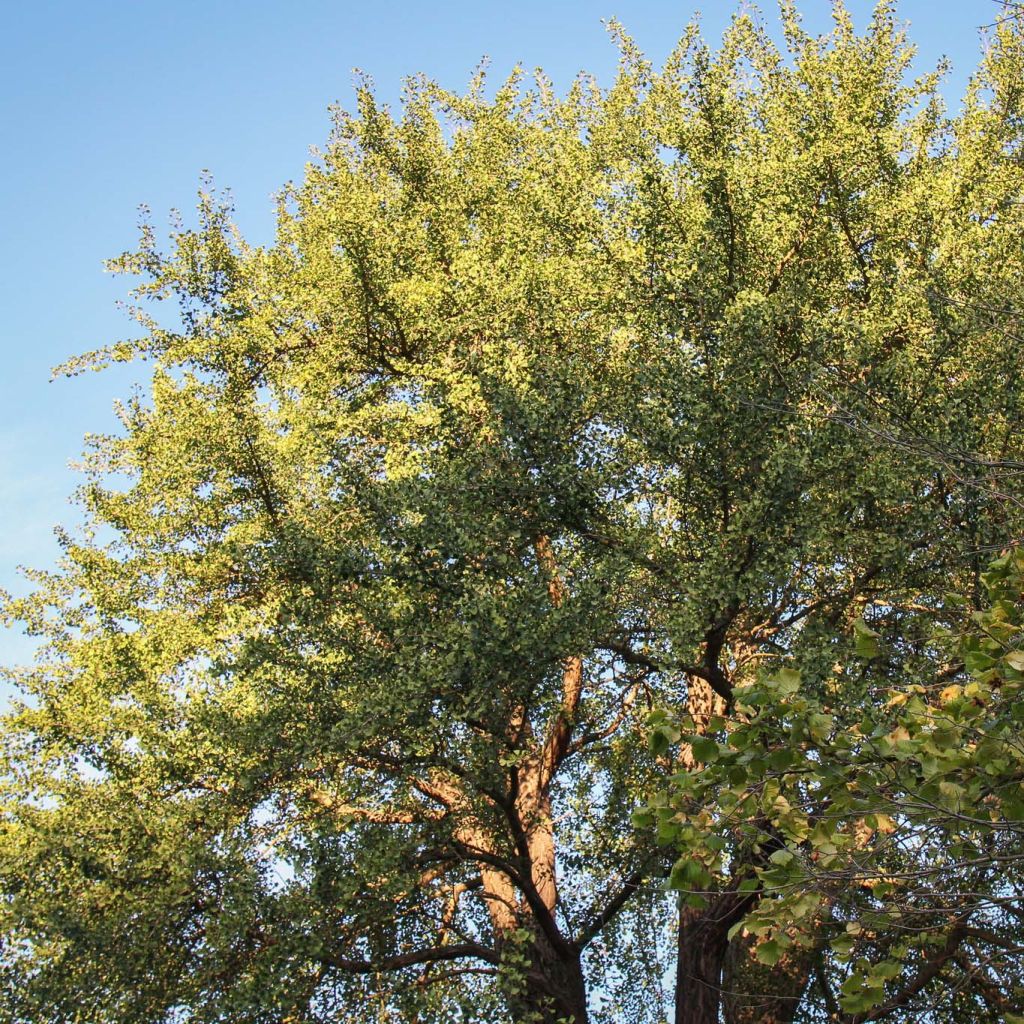

Ginkgo biloba - Maidenhair Tree


Ginkgo biloba - Maidenhair Tree


Ginkgo biloba - Maidenhair Tree


Ginkgo biloba - Maidenhair Tree


Ginkgo biloba - Maidenhair Tree


Ginkgo biloba - Maidenhair Tree


Ginkgo biloba - Maidenhair Tree
Ginkgo biloba - Maidenhair Tree
Ginkgo biloba
Maidenhair Tree, Living Fossil Tree
This item cannot be shipped to the selected country
Delivery charge from €5.90
Oversize package delivery charge from €6.90
Delivery to Corse prohibited
More information
Schedule delivery date,
and select date in basket
This plant carries a 24 months recovery warranty
More information
We guarantee the quality of our plants for a full growing cycle, and will replace at our expense any plant that fails to recover under normal climatic and planting conditions.
From €5.90 for pickup delivery and €6.90 for home delivery
Express home delivery from €8.90.
Oversize package: home delivery by special carrier from €6.90 per order..
Express home delivery from €8.90.
Delivery to Corse prohibited: UE law prohibits the import of this plant from mainland France to Corse as part of the fight against Xylella fastidiosa. Please accept our sincere apologies.
More information

Does this plant fit my garden?
Set up your Plantfit profile →
Description
Ginkgo biloba, which bears the evocative name of the Forty-Ecus Tree, is a majestic tree that shines in autumn, adorned with a bright yellow colour. Its fan-shaped leaves form a golden carpet at its feet when they fall. As the only representative of a now extinct family, a surviving monarch of the primeval forests of China, its survival is owed to the fascination that its strange beauty exerts on humans, as well as its incredible resistance to various attackers. Invite this legendary tree into your garden, if it is spacious enough to accommodate it, as it requires space to reach its full potential.
Ginkgo biloba is the only living representative of the Ginkgoaceae family, a very ancient family that appeared approximately 300 million years ago, even more primitive than the conifers to which it is currently related. This tree with a thousand shields has been living in the Tianmushan Mountains in southeastern China for thousands of years. It was reintroduced to Europe in Utrecht, the Netherlands, in the 18th century and arrived in France at the Montpellier Botanical Garden in 1778. The Ginkgo can reach heights of up to 30m (98ft 5in). Erect and columnar in its youth, its habit becomes more expansive with age, and it can spread to over 9m (29ft 6in) in diameter. Its longevity is remarkable, allowing it to surpass the venerable age of 1000 years. Its deciduous foliage is composed of flat fan-shaped leaves, measuring 4 to 12cm (4.7in) in width. They are flexible and carried by a long petiole. Their colour is a vibrant green in spring and summer, before turning to the splendid golden yellow colour that is noticeable in autumn.
There are male and female Ginkgos, which can be distinguished when they reach the age of flowering, around 25 years. The male "flowers" are grouped in clusters measuring 3 to 8cm (3.1in) in length, and they are actually pollen sacs. The female "flowers," on the other hand, are solitary and resemble the size and colour of mirabelle plums; they are naked ovules. A fertilized ovule by the pollen of a male ginkgo will immediately germinate, usually at the base of the maternal plant. Before autumn, the ovule is smooth and attractive but toxic, especially the fleshy part that contains a molecule responsible for the nauseating odour it will develop as it begins to wrinkle. It is a very hardy bush. It is also very resistant, which has allowed it to survive all the cataclysms that the Earth has experienced. It was one of the few trees to have survived the bomb that devastated Hiroshima in 1945!
Today, Ginkgo biloba has become a beautiful ornamental tree, found from the Luxembourg Gardens to the Elysée Palace. A magnificent specimen to display in a large garden, the Forty-Ecus Tree does not need companions, as it would overshadow them both figuratively and literally. A Japanese maple with red foliage and easy to care for, such as Acer palmatum, could be planted alongside it, as the contrast between the shapes and colours of the leaves would create a small event in the garden at the end of the season. Perhaps also a Japanese pagoda tree for its resemblance to a giant bonsai.
Properties:
Ginkgo has been used in traditional Chinese medicine since ancient times. Its foliage is now used in the West to reduce symptoms of Alzheimer's disease.
The "seed," actually the ginkgo egg, is used in the preparation of chawanmushi, a traditional Japanese dish. Similar to pistachios, they are consumed as food in China, especially on occasions such as weddings.
The cells of the Ginkgo biloba host an endosymbiotic microalgae. This type of symbiosis, between a microalgae and a higher plant, is absolutely unique in the plant kingdom.
The Ginkgo leaf is the symbol of Tokyo, Japan, representing growth, prosperity, charm, and tranquility of the city.
At the origin of founding Asian legends, the Ginkgo biloba is part of the myth of the Seven Sages and the Bamboo Forest, the myth of the Cinnabar Phoenix that consumes and is reborn in its branches, or the myth of the Five Dragons and the Unicorn.
Report an error about the product description
Ginkgo biloba - Maidenhair Tree in pictures




Plant habit
Flowering
Foliage
Botanical data
Ginkgo
biloba
Ginkgoaceae
Maidenhair Tree, Living Fossil Tree
China
Other Ginkgo
Planting and care
Ginkgo Biloba is not very picky about the nature of the soil, but it thrives better in sunny conditions in any good fertile soil, deep enough to accommodate its taproot, and well-drained. It is a very resilient bush that withstands urban pollution well, never gets sick or attacked by parasites. When planting, dig a hole deep enough and rich in humus. During the plant's resting period, in February-March, remove rebellious or tangled stems to maintain a good habit.
Planting period
Intended location
Care
-
, onOrder confirmed
Reply from on Promesse de fleurs
Striking foliage shrubs
Haven't found what you were looking for?
Hardiness is the lowest winter temperature a plant can endure without suffering serious damage or even dying. However, hardiness is affected by location (a sheltered area, such as a patio), protection (winter cover) and soil type (hardiness is improved by well-drained soil).

Photo Sharing Terms & Conditions
In order to encourage gardeners to interact and share their experiences, Promesse de fleurs offers various media enabling content to be uploaded onto its Site - in particular via the ‘Photo sharing’ module.
The User agrees to refrain from:
- Posting any content that is illegal, prejudicial, insulting, racist, inciteful to hatred, revisionist, contrary to public decency, that infringes on privacy or on the privacy rights of third parties, in particular the publicity rights of persons and goods, intellectual property rights, or the right to privacy.
- Submitting content on behalf of a third party;
- Impersonate the identity of a third party and/or publish any personal information about a third party;
In general, the User undertakes to refrain from any unethical behaviour.
All Content (in particular text, comments, files, images, photos, videos, creative works, etc.), which may be subject to property or intellectual property rights, image or other private rights, shall remain the property of the User, subject to the limited rights granted by the terms of the licence granted by Promesse de fleurs as stated below. Users are at liberty to publish or not to publish such Content on the Site, notably via the ‘Photo Sharing’ facility, and accept that this Content shall be made public and freely accessible, notably on the Internet.
Users further acknowledge, undertake to have ,and guarantee that they hold all necessary rights and permissions to publish such material on the Site, in particular with regard to the legislation in force pertaining to any privacy, property, intellectual property, image, or contractual rights, or rights of any other nature. By publishing such Content on the Site, Users acknowledge accepting full liability as publishers of the Content within the meaning of the law, and grant Promesse de fleurs, free of charge, an inclusive, worldwide licence for the said Content for the entire duration of its publication, including all reproduction, representation, up/downloading, displaying, performing, transmission, and storage rights.
Users also grant permission for their name to be linked to the Content and accept that this link may not always be made available.
By engaging in posting material, Users consent to their Content becoming automatically accessible on the Internet, in particular on other sites and/or blogs and/or web pages of the Promesse de fleurs site, including in particular social pages and the Promesse de fleurs catalogue.
Users may secure the removal of entrusted content free of charge by issuing a simple request via our contact form.
The flowering period indicated on our website applies to countries and regions located in USDA zone 8 (France, the United Kingdom, Ireland, the Netherlands, etc.)
It will vary according to where you live:
- In zones 9 to 10 (Italy, Spain, Greece, etc.), flowering will occur about 2 to 4 weeks earlier.
- In zones 6 to 7 (Germany, Poland, Slovenia, and lower mountainous regions), flowering will be delayed by 2 to 3 weeks.
- In zone 5 (Central Europe, Scandinavia), blooming will be delayed by 3 to 5 weeks.
In temperate climates, pruning of spring-flowering shrubs (forsythia, spireas, etc.) should be done just after flowering.
Pruning of summer-flowering shrubs (Indian Lilac, Perovskia, etc.) can be done in winter or spring.
In cold regions as well as with frost-sensitive plants, avoid pruning too early when severe frosts may still occur.
The planting period indicated on our website applies to countries and regions located in USDA zone 8 (France, United Kingdom, Ireland, Netherlands).
It will vary according to where you live:
- In Mediterranean zones (Marseille, Madrid, Milan, etc.), autumn and winter are the best planting periods.
- In continental zones (Strasbourg, Munich, Vienna, etc.), delay planting by 2 to 3 weeks in spring and bring it forward by 2 to 4 weeks in autumn.
- In mountainous regions (the Alps, Pyrenees, Carpathians, etc.), it is best to plant in late spring (May-June) or late summer (August-September).
The harvesting period indicated on our website applies to countries and regions in USDA zone 8 (France, England, Ireland, the Netherlands).
In colder areas (Scandinavia, Poland, Austria...) fruit and vegetable harvests are likely to be delayed by 3-4 weeks.
In warmer areas (Italy, Spain, Greece, etc.), harvesting will probably take place earlier, depending on weather conditions.
The sowing periods indicated on our website apply to countries and regions within USDA Zone 8 (France, UK, Ireland, Netherlands).
In colder areas (Scandinavia, Poland, Austria...), delay any outdoor sowing by 3-4 weeks, or sow under glass.
In warmer climes (Italy, Spain, Greece, etc.), bring outdoor sowing forward by a few weeks.



































